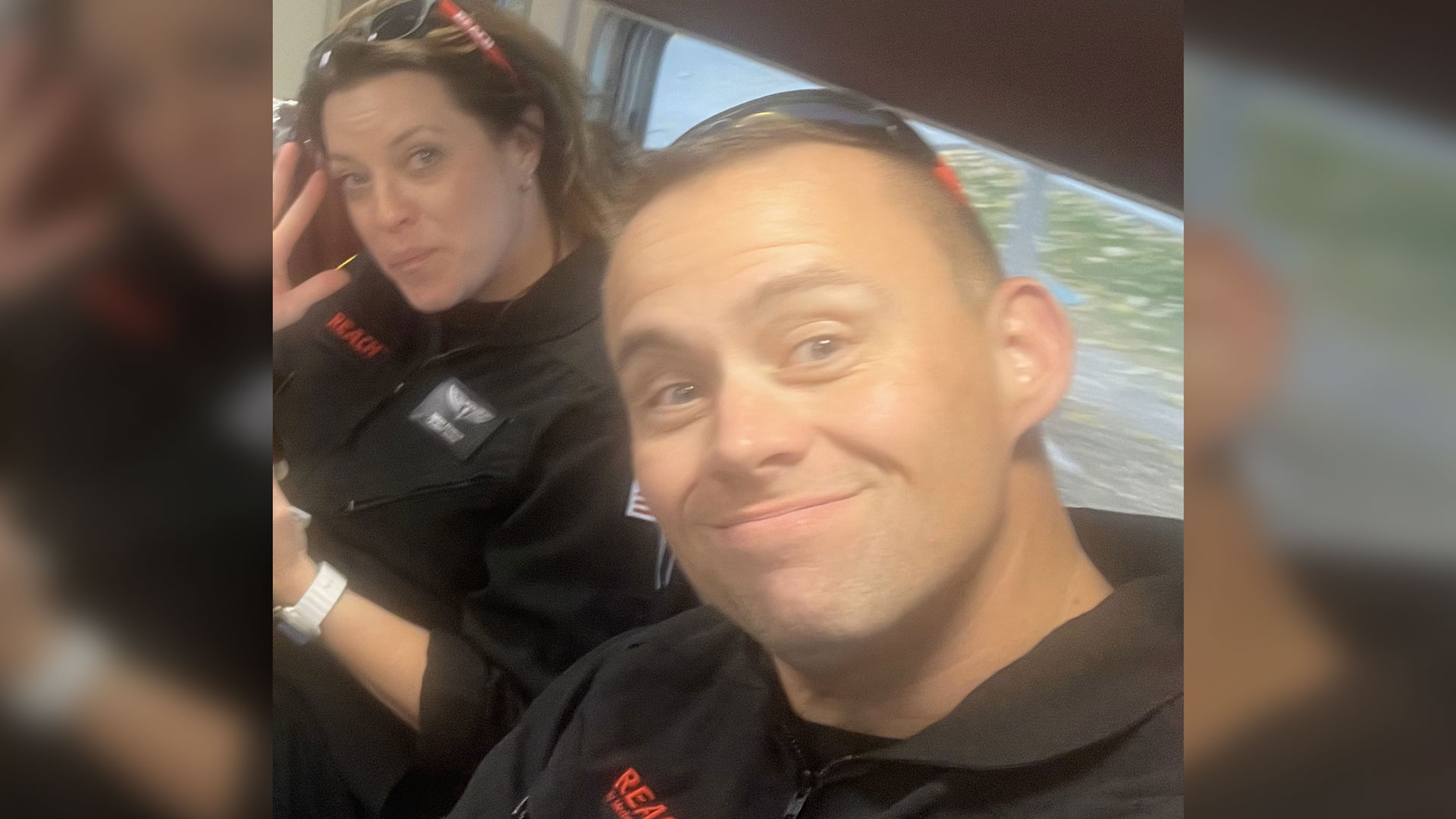Do The Right Thing
February 13, 2024
A Nevada-based REACH crew leaves no person behind when responding to a downed aircraft.
Do you have a piece of advice that someone told you early on or during your career journey that you still follow today? Maybe it’s a few words that have given you a sense of guidance or direction, particularly in times of uncertainty.LINEBREAKLINEBREAKLINEBREAKFor the crew of REACH Air Medical Services 23 in Elko, Nevada, that special “piece of advice,” passed on by their leaders, proved to be extremely helpful when they were called to respond to a downed aircraft in a remote hillside, south of Carlin.LINEBREAKLINEBREAKLINEBREAK“Our fixed-wing pilot with REACH 58 was on a flight to Reno when he heard about the downed aircraft and gave us general directions on where to find it,” said Sarah Pehrson, REACH 23 flight nurse. “The passengers weren’t hurt, which was good, but the plane had to make an emergency landing in an isolated area, which was hard to access as it only had a couple of untraveled roads and muddy conditions.”LINEBREAKLINEBREAKLINEBREAKThen, to make matters more difficult — the weather was a challenge.LINEBREAKLINEBREAKLINEBREAK“We had pretty intense fog that day, which most likely limited the options of forced landing areas for the pilot of the airplane,” said Trent Kingston, REACH 23 pilot. “While we could hear the Emergency Locator Transmitter signal for the downed aircraft, it took some time engaging in a back-and-forth exchange with the pilot to get to the point in which we were both able to hear and see each other. Once he saw us, he was able to give us directions towards the crash site, and I was able to find it.”LINEBREAKLINEBREAKLINEBREAKBut after finding the plane, the crew faced yet another set of complications: landing their aircraft and caring for the passengers.LINEBREAKLINEBREAKLINEBREAK“Once we found the plane, we had a delay in landing because we had to get permission from the Aviation Administrator On Call (AAOC), who is the authority that determines if we can change a ‘seek and assist’ flight to a ‘scene call,’ and land,” said Pehrson. “Then, after we got permission to land, we lost radio and cell contact. And though we were able to land and assess the passengers, who were fine and had signed the Against Medical Advice waiver, we didn’t want to just leave them there.”LINEBREAKLINEBREAKLINEBREAKThe problem was that the crew had already been informed by the Salt Lake Center that a sheriff’s officer would only be able to arrive at the downed plane’s location the next day. That, and the fact that the crew was not authorized to transport people unless they are receiving medical care, posed a major dilemma: Do they just leave the pilot and passenger on that hillside in cold, foggy weather conditions or do they seek to get permission and fly them to a safer and public place?LINEBREAKLINEBREAKLINEBREAK“I had already told the crew that I’m not leaving the area without transporting these people,” said Pehrson, who added that while she was determined to help the “non-patients,” she knew she needed some form of approval to do so. “We didn’t have cell service where we were at, so I ended up climbing a muddy hill to get enough reception to call my leaders, who agreed that we shouldn’t leave the pilot and passenger, even if they didn’t need medical intervention.”LINEBREAKLINEBREAKLINEBREAKThe REACH 23 crew wasn’t surprised by their leaders’ response as it aligned with an important rule that’s been ingrained in their training, which is “when you don’t know what to do, do the right thing.”LINEBREAKLINEBREAKLINEBREAKAnd in this case, the “right thing” was to fly the pilot and passenger, non-patients, to a safe place, and that’s what the crew did. LINEBREAKLINEBREAKLINEBREAK“We ended up flying them to a location where they were met by Carlin EMS,” said Pehrson. “We took two trips. The first was with me, Trent and the pilot of the downed plane; the second trip included the pilot’s wife, the passenger, Trent and our Flight Nurse James Hayward.”LINEBREAKLINEBREAKLINEBREAKPehrson adds that the non-patients, the pilot and his wife, were not only extremely grateful for her crew’s help, but were also members of the healthcare industry, themselves: traveling nurses.LINEBREAKLINEBREAKLINEBREAK“They were so thankful for everything we did, and the funny thing is, the pilot had actually worked as a traveling nurse with James’ (Hayward) wife. Small world,” said Pehrson.LINEBREAKLINEBREAKLINEBREAK“Every call is important; every life is precious,” said Hayward. “We have a poster at our base from REACH that basically says, ‘Do the right thing for the patient, every time,’ and it’s a phrase that’s embedded in our minds when we go out on a call. In this case, it was great seeing the relief in this couple, knowing that they weren’t lost or left behind. This kind of reaction renews my love for the job.”LINEBREAKLINEBREAKLINEBREAKPehrson agrees.LINEBREAKLINEBREAKLINEBREAK“Patient care is why we are here; this is our passion,” she said. “It is so important to ‘do the right thing’ even if the people we’re helping do not need or require medical attention. That’s the REACH way, that’s the GMR way. It’s such a good feeling to work with a company that truly goes above and beyond to do what is right.”





